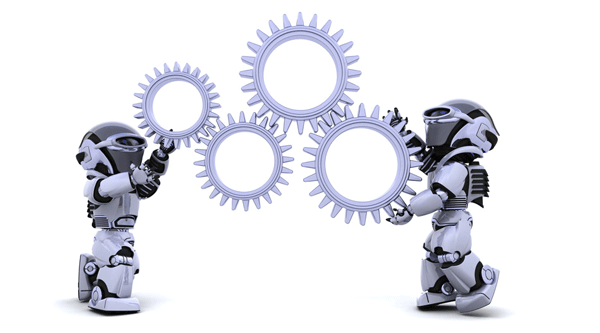Automation mainly refers to one of the two basic characteristics of a home automation system. It can be defined as the possibility to program and schedule devices that are attached to a network. This type of programming may include time-related commands like having your lights to turn on and off at a specific time of the day, or non-scheduled events, like having your lights turned on and off when the alarm is triggered.

As technology progresses, automation becomes “smart”, very much like mobile phones did. “Smart” automation systems include devices that are Internet-enabled, which means they are connected to the network and are controlled by it. In home automation cases, this would include a home computer as the classic control unit and the other device would be a control panel in a security system or a user-friendly app interface that can be accessed by the internet controlled PC, smart-phone or a tablet. This type of automation is a little bit more expensive and is very common in the modern houses of many celebrities.
As automation is a whole system that includes practically everything that is hooked up to a remotely controllable network (alarms, smoke detectors, doors and similar), to better to understand it, it is best to take a look at the basic automation components.
So, what can be part of the automation system? Basically, anything that can be connected to a network falls under the basic automation components. Home automation, which is the most common type of automation, mainly connects simple binary devices as power outlets, electronic locks, lights which are “on and off” devices and security sensors,which have two states – open and closed. Defined like this, basic automation components can be divided into several categories.
- Controlled devices are mainly present in home automation system, as a wide range of equipment that can be controlled by it. Controlled devices are kitchen appliances, HVAC systems, power doors, home theater systems, telephone systems, messaging systems and similar devices.
- Sensing devices report values, like temperature, humidity, sound levels, or states (open, closed, on, off etc.). Basically, the signals that sensors receive are converted into data that is displayed by a controller program and enables the user to make informed decisions.
- Interface devices provide the logical communication link between the controller and the controlled unit in a system. They may come as separate units or are built-in in the controlling device, in which case they’re considered a feature of the device rather than separate equipment.
- Controllers provide the intelligent control functions in the system. These components include many devices, from simple lamp timers to smart keypads of very powerful computers.
- User interfaces mean user is able to interact with the system. This is what is mainly present in the houses of wealthy, where you can say ”turn on kitchen lights” and lights in the kitchen go on. Basically, the user interface sends information to the controller or presents them to the user, so action can be taken.
- System Network as part of the basic automation components includes everything from controllers, sensors, wires, cables, adapters, connectors, etc., that serve to connect different parts of the entire system. Although it sounds very simple, it’s not – it’s the labour intensive part of the installation system.
























